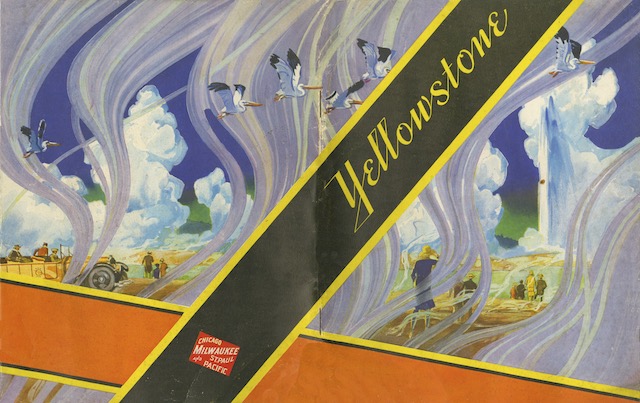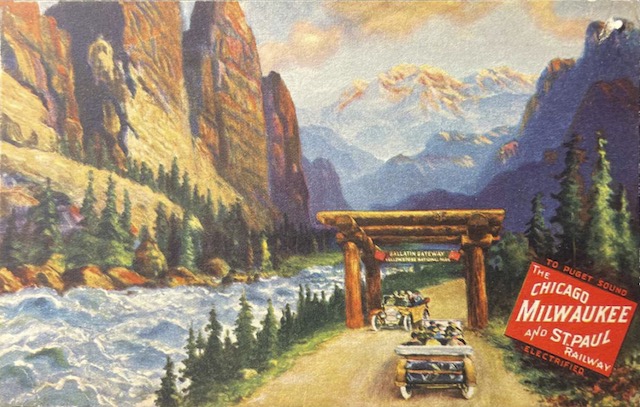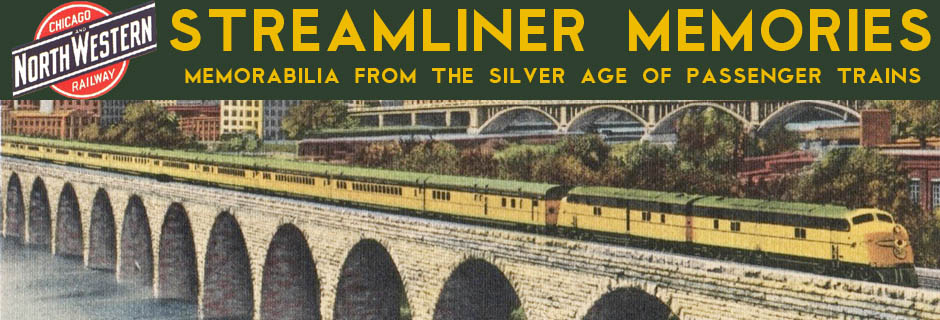The unexpectedly high costs of building its Pacific Coast extension combined with unexpectedly low transcontinental freight business due to the opening of the Panama Canal put the St. Paul Road into receivership in 1925. Among other things, the receiver who was put in charge of reorganizing the railroad, which now styled itself the Milwaukee Road, approved $300,000 — about $10 million in today’s dollars — for the construction of a fine hotel in Salesville, Montana, which was as close as Milwaukee tracks came to Yellowstone National Park.
 Click image to download a 14.3-MB PDF of this 52-page booklet. Click here to download a 10.2-MB PDF of the front and back cover.
Click image to download a 14.3-MB PDF of this 52-page booklet. Click here to download a 10.2-MB PDF of the front and back cover.
Salesville was actually several miles away from the railroad’s main line, but the Milwaukee had purchased a local interurban line that connected Bozeman with nearby Salesville. To create a more inviting experience, the railroad convinced the town to rename itself Gallatin Gateway, as the trip from the inn to Yellowstone would be up the Gallatin River canyon.
 Click image to download a 280-KB PDF of this postcard.
Click image to download a 280-KB PDF of this postcard.
Milwaukee trains started serving Gallatin Gateway in 1926, but the inn didn’t open until 1927. The above postcard doesn’t mention the inn, so it was probably issued in 1926.
This lengthy booklet with its lavish cover was printed in February, 1928, a few months after the opening of the inn in June, 1927. The inn itself is pictured in the centerfold on pages 26 and 27. Most of the rest of the booklet is about the wonders of Yellowstone.
I have many fond memories of staying at the Gallatin Gateway Inn. After the Milwaukee ceased passenger service, the hotel passed through several owners but in the late 1980s someone restored it to its former glory. A couple of non-profit groups in Bozeman invited me to speak about natural resource issues at conferences they held at the inn. I even once sponsored a conference there myself.
Coincidentally, in about 1990, I noted in Albro Martin’s biography of James J. Hill that he had given a speech about natural resource issues in 1910. I obtained a copy of the speech and discovered that much of what he said was still relevant today. I found someone who made costumes for Civil War re-enactors and persuaded her to make me a suit suitable for a gentleman in about 1910. I then memorized a slightly edited version of Hill’s speech and recited it to various audiences as a living history.
I talked one of the Bozeman groups into letting me give the speech at one of their Gallatin Gateway conferences, and ended up doing so several more times at the inn. It was the wrong railroad, but it was still a railroad hotel.
